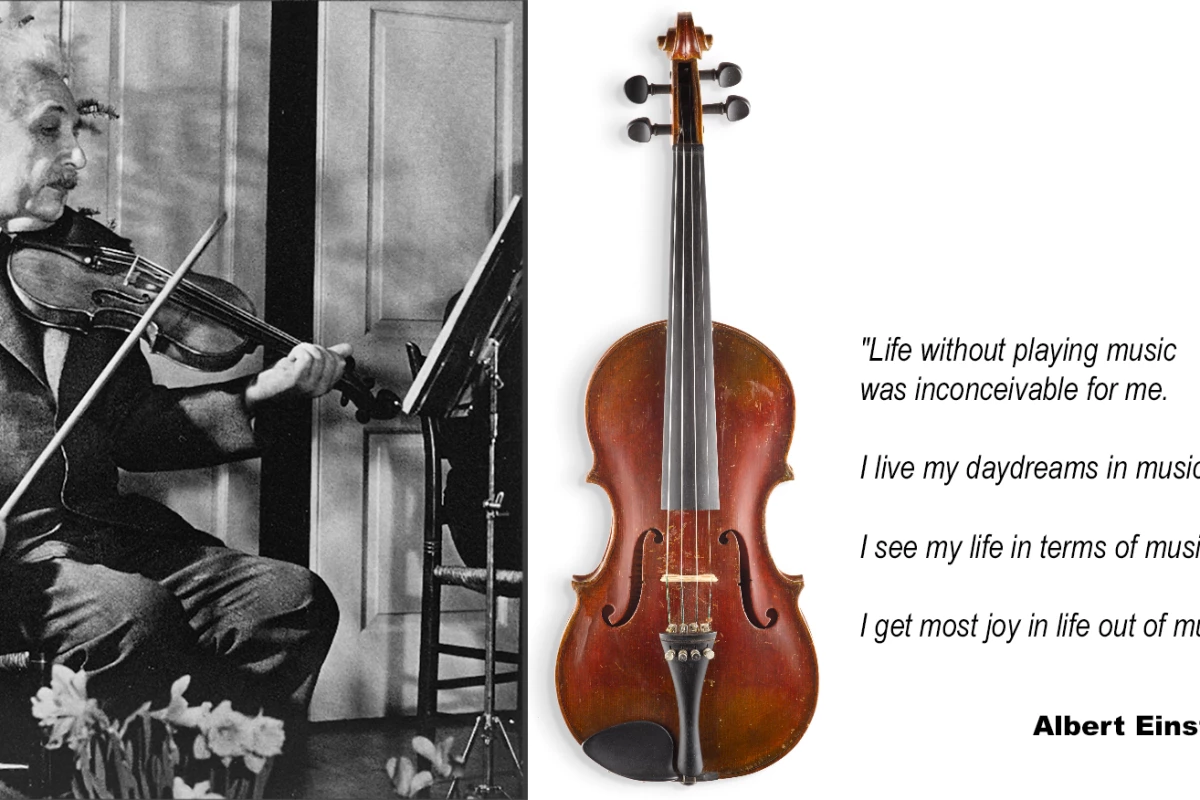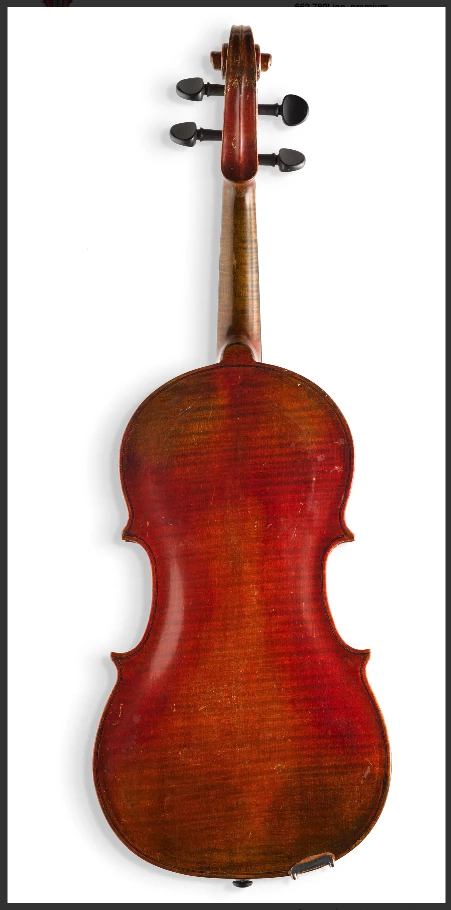A violin owned and played by Albert Einstein achieved $516,500 at Bonhams New York auction yesterday. Like so many other major items of Einstein memorabilia that have gone to auction in recent times, a bidding war broke out that raised the price – in this case to five times its estimate.
The instrument was made in Pennsylvania by Oscar Steger of the Harrisburg Symphony Orchestra, who dedicated the instrument to "the Worlds [sic] Greatest Scientist Profesior [sic]" on an inscription in the violin's body.
![The violin was made by luthier Oscar Steger of the Harrisburg Symphony Orchestra, who dedicated the instrument to "the Worlds [sic] Greatest Scientist Profesior [sic]" on an inscription inside the body of the violin.](https://assets.newatlas.com/dims4/default/26819c1/2147483647/strip/true/crop/1019x768+0+0/resize/1019x768!/format/webp/quality/90/?url=https%3A%2F%2Fnewatlas-brightspot.s3.amazonaws.com%2Farchive%2Feinstein-violin-fetches-usd-516500-at-auction-3.png)
Steger presented the violin to Einstein in 1933 when he moved to the Princeton Institute for Advanced Study. Einstein subsequently gifted the instrument to Lawrence Hibbs, the young son of a Princeton University handyman who was a budding violinist, and it has been kept in the family since that time.

Einstein was a passionate musician who began playing the violin at age 6, discovering the Mozart violin sonatas at 13 and playing throughout his life. There are many sources that indicate that music was what made Einstein happiest.
According to the auction report, "Einstein rarely traveled without his violin and music was so important that he would arrange his schedule so that he could host a weekly Wednesday night chamber music session in his Princeton home."
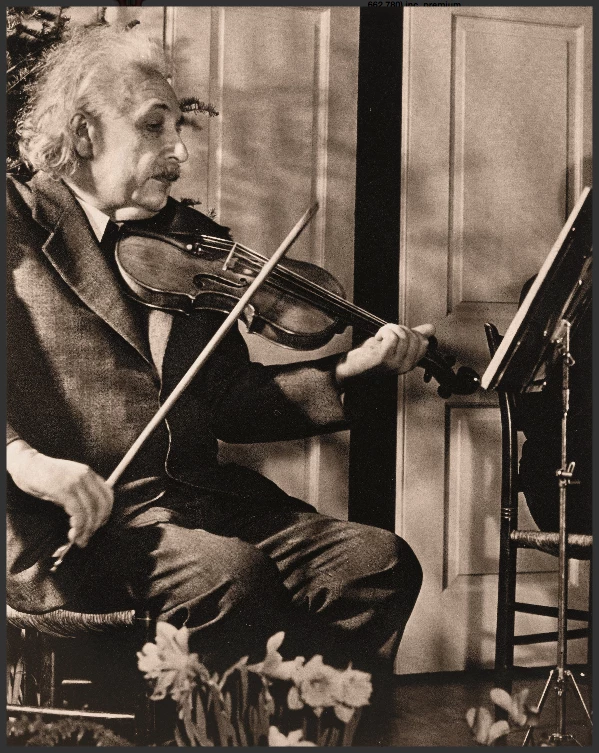
Einstein is also quoted as saying: "Life without playing music was inconceivable for me. I live my daydreams in music. I see my life in terms of music...I get most joy in life out of music."

The violin now becomes the most valuable Einstein memorabilia (other than documents), surpassing his telescope (which fetched $432,500 at auction), his pocket watch which fetched $352,054, his childhood building blocks which fetched $82,564 and his billiard briar pipe which fetched $67,665.

The Levi Strauss Leather Jacket worn Einstein on the cover of Time magazine, was expected to sell for between $55,000 and $80,000 and fetched $145,974. The jacket was purchased by Levi Strauss and the 1930s design was reissued as a limited edition of 500 only at $1200 per jacket. The inside story of the jacket being purchased makes excellent reading on the Levi Strauss blog.
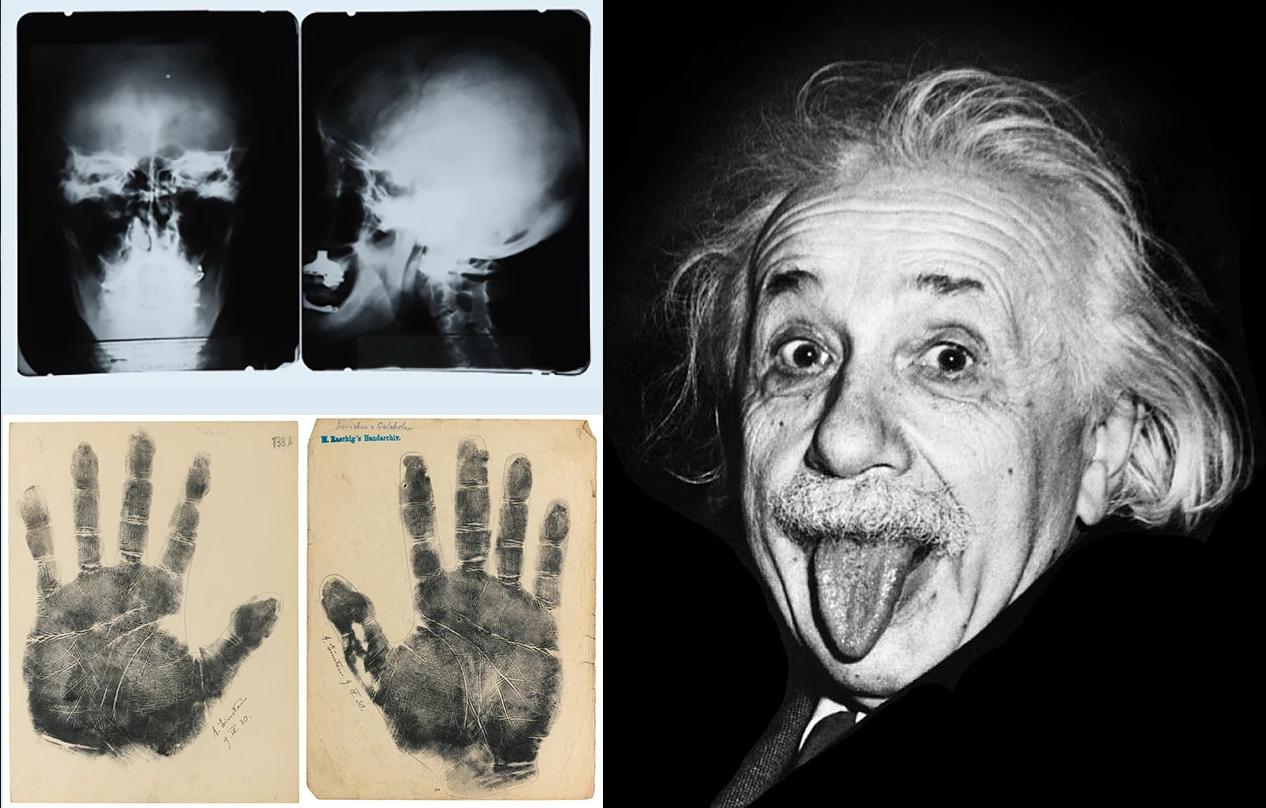
In 2010, X-rays of Einstein's skull sold at a Julien's auction for $38,750, a signed impression of Albert's handprints sold for $85,000 and a print of the image at right (with his tongue poking out) from his 72nd birthday party sold at auction for $56,250 in January, 2015.
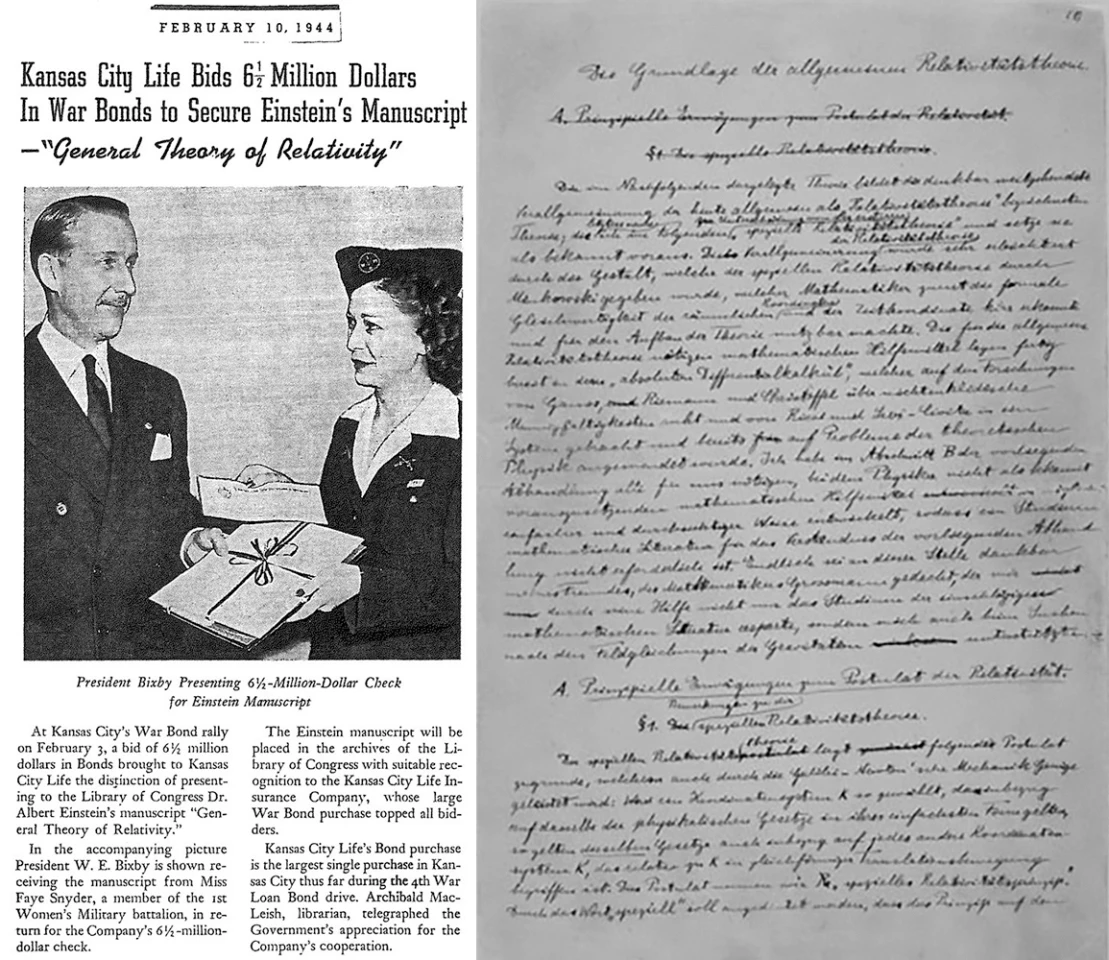
Einstein's scientific documents and papers appear multiple times in our annual auction summaries, The 50 most valuable scientific documents of 2016, The 50 most valuable scientific documents of 2017 and The most valuable scientific documents of all-time.
Einstein famously threw out the original hand-written manuscript of his Theory of Relativity when the paper was published in 1905, but made another hand-written copy in 1943 to raise money for the war effort. The paper was purchased at a 1944 auction held by the Kansas City Womens Club by the Kansas City Life Insurance Company for $6.5 million, The manuscript was then donated to the U.S Library of Congress, where it still resides. Despite the date of the auction, only the Leonardo da Vinci Codex (purchased by Bill Gates for $30,802,500 in 1994) and John James Audubon's Birds of America ($11,570,496 - £7,321,250 at a Sotheby's auction in December, 2010) are the only scientific documents to have ever sold for more money at auction.
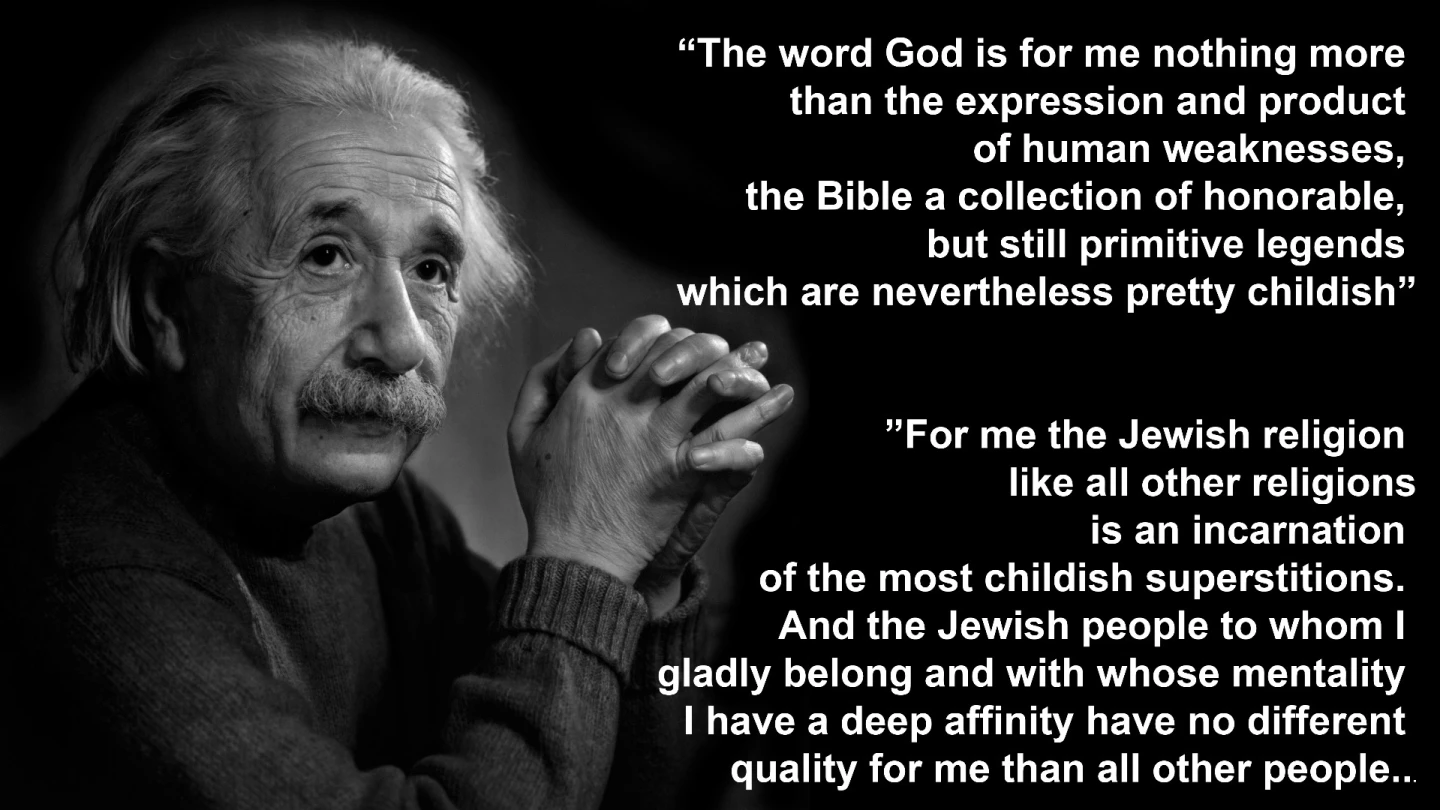
Einstein's personal letters and documents always sell well at auction, with the most valuable being a two-page letter from Einstein to philosopher Eric Gutkind dated January 3, 1954 that sold for £207,600 ($404,147) in May, 2008, with Richard Dawkins among the bidders. In 2012, the letter was auctioned again on eBay, fetching an astonishing $3,000,000. The quotes above are from that letter.
Many of Einstein's personal letters have surfaced over the six decades since his death, almost all fetching huge sums at auction. In one auction in 1996, a trove of Einstein letters sold at a Christies auction in multiple lots totaling $878,500, the most expensive being a number of letters between Einstein and his first wife Mileva Maric, which fetched $442,500.
Perhaps the most intriguing of the letters that have come to light since his death were those exchanged between Einstein and Russian socialite Margerita Konenkova. In a time when J. Edgar Hoover's FBI vigorously pursued Einstein as a possible spy, they completely managed to miss his love affair with Konenkova.
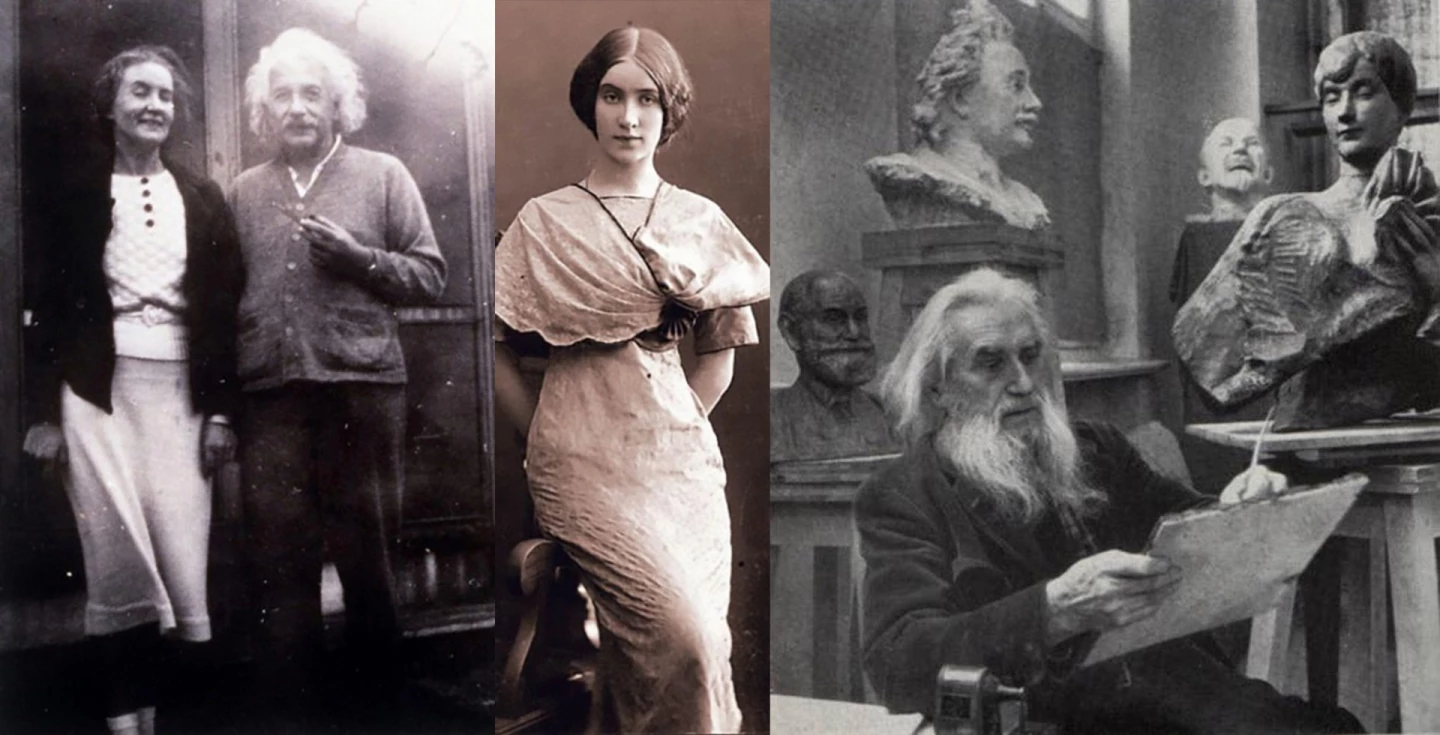
Margerita Konenkova was a former lawyer who spoke five languages and lived in Greenwich Village with her husband, Russian realist sculptor, Sergei Konenkov, sometimes referred to as the "Russian Rodin." They were introduced by Einstein's wife Elsa, and the couples became friends, with Sergei producing a famous sculpture of Einstein (above right with a sculpture of Margerita top right in the photo).
When Elsa died in 1936, Margerita became a regular visitor to the Einstein home and she and Einstein became lovers sometime prior to 1941, continuing the affair until she returned to Russia in 1946.
The letters between Einstein and Margarita Konenkova were expected to fetch between $250,000 and $350,000 at a Sotheby's auction in 1998, but failed to meet reserve with a high bid of $180,000. It was those letters that precipitated the revelations that Margarita had been secretly employed by Russia's intelligence service, though there is compelling evidence that Einstein knew of her relationship with Soviet intelligence and considered it irrelevant.
Much more on the history of Einstein memorabilia, both scientific and personal, can be found in this extensive story we wrote when Albert's leather jacket was going to auction.
